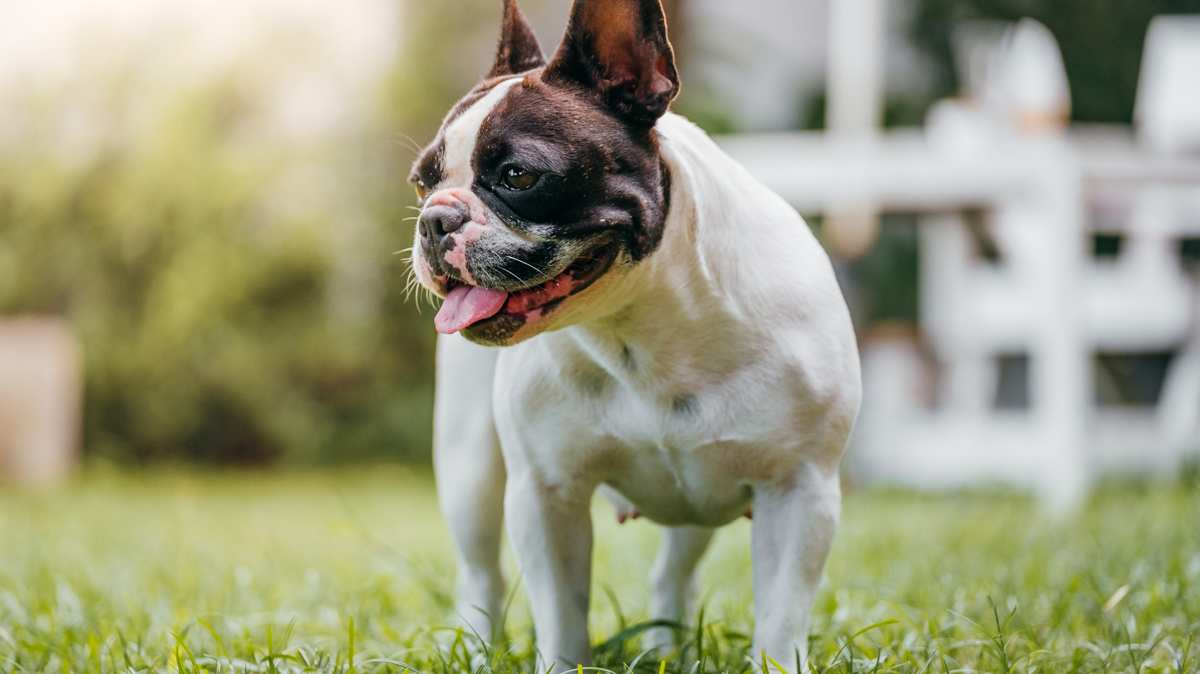French Bulldog Breed Details
Below are the details and specs for the French Bulldog dog breed.

The French Bulldog was originally bred in England to be a toy-sized English Bulldog for companionship. It wasn't until after the breed was taken to France that the dog's popularity increased and its became known as the "French Bulldog". As a companion dog the French Bulldog thrives with people making the breed an excellent choice for individuals who spend a lot of time at home.
Below are the details and specs for the French Bulldog dog breed.
The French Bulldog is a small sized dog breed. Adults stand 11 to 12 inches tall from ground to shoulder and weigh between 16-28 pounds. This size makes the French Bulldog a good choice for families in apartments, condos, or for people who have limited space for a dog. The breed is large enough to be overlooked by most predators, but shouldn't be left outside unsupervised for long periods of time.
The French Bulldog has many of the same behavioral characteristics as the English Bulldog. The breed can be stubborn and can become territorial and jealous of other pets (similar to other small dogs). French Bulldogs do well with children, however it is not recommended to leave the breed alone with small children due to the risk of the kids accidentally injuring the dog through rough play.
French Bulldogs are a low to medium maintenance dog breed. Their coat is easy to groom and requires brushing only a few times per week. It is not uncommon for French Bulldogs to drool and make a mess when eating, so you may need to set their food bowl on a tray/towel to protect your floor from potential spills. The breed requires very little exercise and can meet their energy requirements by a play session or two. French Bulldogs can overeat, but a short walk can help keep their weight balanced.
The history of the French Bulldog can be a bit confusing. Exactly where do French Bulldogs come from? If your answer is "France," you'd be (mostly) wrong about the specific French Bulldog origin.
French Bulldog breed history actually begins in England in the mid-19th century. At the height of the Industrial Revolution, breeders in some English cities began "downsizing" the standard Bulldog; this was particularly true in the city of Nottingham, which was known for its lace manufacturing. This smaller Bulldog became an unofficial mascot among Nottingham's lace-makers--and when many of the workers relocated to France for better work opportunities, they brought their dogs with them.
In France the breed's popularity exploded. First these little Bulldogs were only seen in rural areas, but eventually they became cherished by aristocrats in Paris. Along the way they were likely crossbred with other small breeds like the Pug, and they began to be called a specific breed name: the Bouledogue Francais.
Meanwhile, the French Bulldog's popularity continued to spread across the world. In the U.S. around the turn of the 20th century, the French Bulldog Club of America (FBCA) was created--and the club's standards noted that the so-called "bat ears" (round and erect as opposed to smaller, hanging "rose ears") were the preferred ear style for Frenchies. The American Kennel Club recognized the breed shortly after the FBCA's creation, and the French Bulldog's popularity has risen ever since.
As of 2021, the French Bulldog ranks fourth on the AKC's list of 197 recognized breeds.
Below are common health issues and concerns for the French Bulldog breed.
Below are potential health concerns associated with French Bulldogs.